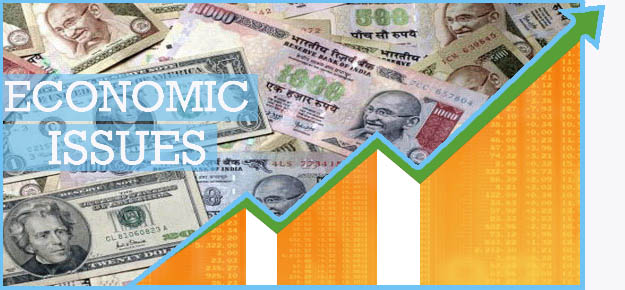A country of the size and diversity of India is perhaps destined to exist in a permanent state of managed chaos when it comes to society as a whole. But on the economic front as well, India has come a long way from the (admittedly unsuccessful) attempts of Nehruvian socialists to manage the economy. After the liberalisation of 1991, successive governments have followed policies of a more or less capitalist nature. Despite the progress made since then, India continues to face a host of issues that act as roadblocks to prosperity.

Now an economy that is the third-largest in the world (US $2.1 trillion as estimated by Reuters in April this year) has more issues than can be discussed over the course of this article, but we shall try to cover some of the salient points.
Inflation
Take a poll of the layperson on the street and India’s biggest problem at the moment would appear to be inflation. All things considered, this is not untrue, though another view could be that inflation is more of a symptom of the other issues plaguing the economy than an illness in its own right. By impacting the householders directly, inflation is the most painful economic evil for the general populace.
Inflation has hovered around 8.5% for the last three years and food inflation has been even higher. In view of this, controlling of inflation has to be a major priority for the governments of the day.
Sliding value of the Rupee
While the Indian rupee has always been prone to having a fluctuating value against the dollar, there is no doubt that the fall by nearly 20% from early 2015 to the present day has been worrying. Traditionally, a cheaper currency is seen as a mixed blessing, since it should lead to Indian exports becoming more competitive in the world market. But India is a country that imports heavily – primarily Oil and Gold – and these are always denominated in dollars or euro. The causes for the slide are complex – the stagnant European economy, the uncertainty of the Federal Reserve in the USA and its policy on interest rates, lack of investor confidence in the stock market in India, and so on.
Controlling the slide will be essential to ensuring stability as well as controlling the prices of imports – which all also help in reducing inflation.
Infrastructure
A short trip abroad brings home just how inadequate India’s infrastructure is. Despite considerable progress made over the years, we remain a country where uninterrupted electricity supply is a luxury, where potholes go with roads like bread with butter and the simplest tasks can become cumbersome.
This is not only a social problem, though. Inadequate power supply is detrimental to industrial output. Bad roads lead to slow transport of foods and essential goods. It is said as much as 40% of the fruits grown in India rot away before reaching the markets because cold storage to transport them is not available. Massive investment is needed to improve infrastructure, and it will always be a long-term project, but it remains the most transformative measure that could boost India’s economy.
Corporate debt and Bank NPA’s
These are two related points that are almost hidden in plain sight. While Inflation affects us directly, infrastructure (or lack of it) is clearly visible, and the Re / US$ exchange rate gets a lot of publicity, no one talks about corporate debt default unless it involves a glamorous liquor baron. The fact is that Indian companies are deep in debt, and far too much of it has not been repaid. Banks are the backbone of the economy for any country, but the debt they hold, if it is not recoverable, is like a cancer eating away at that bone.
This is a problem that does not admit of an easy solution. Banks are too big to fail, but blanket debt waivers would amount to rewarding those who have followed bad business practices. The only option is a further strengthening of the Debt recovery tribunals and ensuring Banks are able to enforce debt collection. Without this, however much the economy grows, it will always teeter on the brink of a collapse similar to what happened to the developed economies in 2008-09 following the collapse of Lehman Bros.
Human development
Last, but certainly not the least on our list is the quality of our greatest resource – the labour force. India has abundant human resources, but skill levels remain low. Literacy levels are poor and the quality of education questionable. Survey after survey of corporates shows that even engineers and graduates are found to not be up to the levels expected by the employers.
A major push for skilling of the workforce in conjunction with ‘Make in India’ initiatives is needed to not only deal with India’s unemployment problem, but also to boost economic growth to a higher trajectory.































